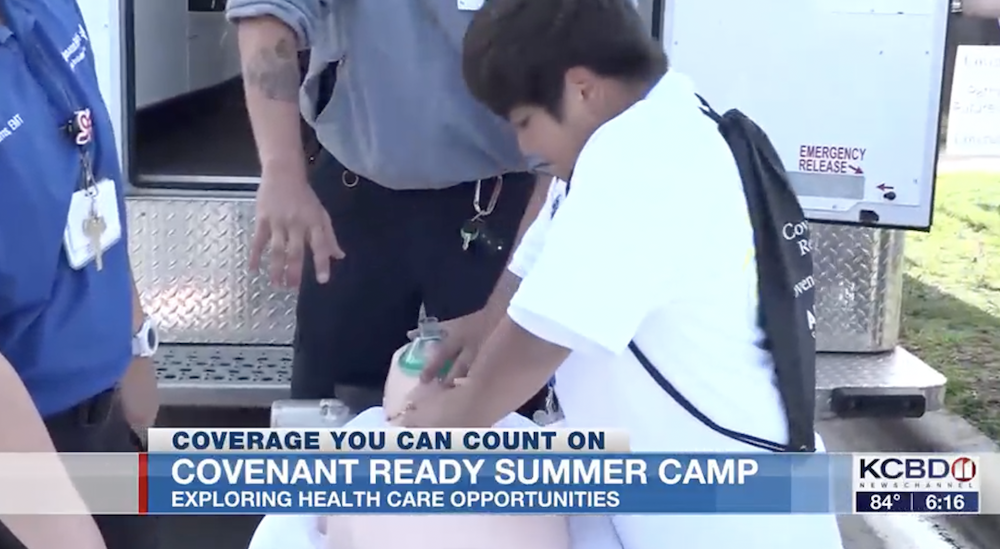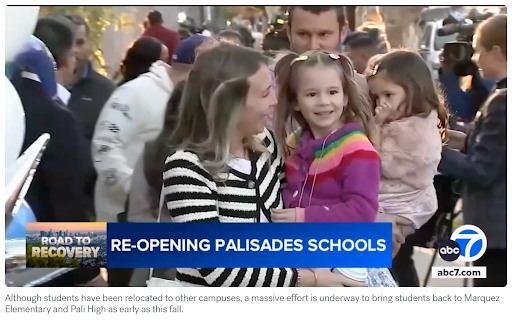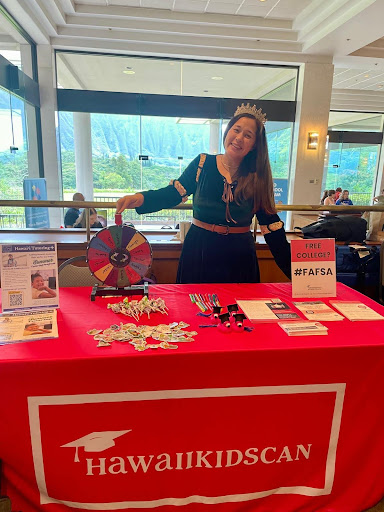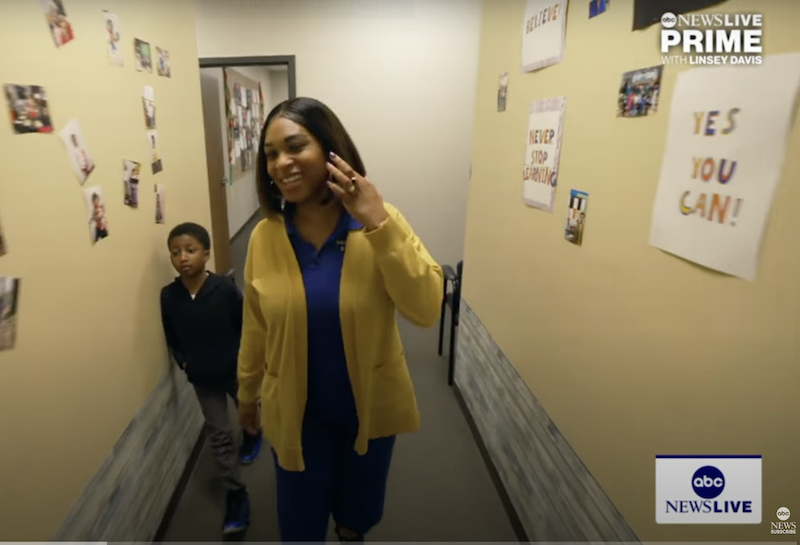Jump to: Top Tasks | From the Field | Key Resources | Moments of Resilience
It is week 188 in our new reality and we are thinking about how the way students feel about higher education is changing how we need to think about success after high school.
“The percentage of Oregon high school graduates who continued on to college within 16 months after high school dropped almost 10 percentage points in the past decade, exacerbated by precipitous declines during the pandemic and worsened in the past year,” writes Sami Edge for The Oregonian. “Oregon’s 2021 drop in college-going mirrors enrollment declines at the state’s colleges and universities and a drop in postsecondary enrollment nationwide.”
Last year, Jon Marcus dug into the dynamics driving this shift for NBC News. “With the exception of wartime, the United States has never been through a period of declining educational attainment like this,” Michael Hicks, director of the Center for Business and Economic Research at Ball State University’s Miller College of Business, told Marcus in the piece. Reasons for the decline include “widespread and fast-growing skepticism about the value of a degree, impatience with the time it takes to get one, and costs that have finally exceeded many people’s ability or willingness to pay.”
SUBSCRIBE
Few states have avoided the downward trend. “The proportion of high school graduates in Tennessee who are going directly to college, for example, has fallen to 53% — down 11 percentage points since 2017,” Marcus reports. “In Indiana, it dropped to 53% in 2020, down 12 percentage points from five years earlier and a pace state Commissioner for Higher Education Chris Lowery has called ‘alarming.’”
Looking at the country as a whole, Marcus writes that the “United States has already fallen from second to 16th since 2000 among developed nations in the proportion of 25 to 34-year-olds with bachelor’s degrees,” a trend that is likely to continue as Covid-era learning losses continue to go unaddressed in our K-12 system.
While there is much more that needs to be done by higher education institutions themselves, the solution to this slide starts in US high schools, where we need to reconnect with students, help them gain confidence in their ability to compete by improving their foundational knowledge and skills and build better bridges between high school learning and the career they choose through advanced coursework, internships, apprenticeships, and more.
Last week, we looked at the continued momentum behind making tutoring a permanent feature of the education system of the future and put a spotlight on Ben Austin’s bold bet on constitutional reform. This week we take a deep dive into the tutoring efforts in Louisiana and explore the sea-change underway in homeschooling.
TOP TASKS
Pilot new models so that kids – and the system – can learn
 Last Wednesday, Louisiana Kids Matter’s Kelli Bottger was joined by state legislators, Accelerate’s Kevin Huffman, State Superintendent Dr. Cade Brumley and local media for the kick-off of the state’s new tutoring pilot program.
Last Wednesday, Louisiana Kids Matter’s Kelli Bottger was joined by state legislators, Accelerate’s Kevin Huffman, State Superintendent Dr. Cade Brumley and local media for the kick-off of the state’s new tutoring pilot program.
Held at Magnolia Woods Elementary School, in one of the first districts to implement the new tutoring program, the initiative leverages Zearn for mathematics and Book Nook for reading. Students meet with the same tutor four days a week for 30 minutes in groups of three, differentiated so that students are clustered with peers working on the same foundational skills. While students learn with their tutors virtually, the tutoring is synchronous and personalized.
“As you’ll see, student engagement is really high with the tutors. It’s a level of engagement that I was surprised by,” said Principal Watson, who has rave reviews for the initiative. “And surprisingly, the kids are so excited to get to see their tutors, it’s had a substantial impact on chronic absenteeism at our school.”
Perhaps most important: students love the program. “I think a lot of it is the personalized attention,” 4th grade teacher Ms. Osborn offered. “After the first tutoring session, the entire class pleaded with me to meet with their tutors again the next day.”
Accelerate founder Kevin Huffman noted that working with an advocacy group like Louisiana Kids Matter has been an eye-opener, “With Kelli’s relationships and expertise and the willingness of the department and legislators, I think Louisiana has a real shot to be the model state for scaling and ensuring quality tutoring for the nation.”
Given the early successes of the pilot, Kelli and Kevin are problem solving in two critical areas: first, bringing tutoring to scale, and second, ensuring that we learn by doing through a clear cycle of monitoring student growth, analyzing data and holding tutors and programs accountable for results.
While we await the hard data, however, the early reviews show promise. “If I had to choose between a day of regular school and tutoring?” 3rd grader Adrien pondered, “Definitely tutoring. Definitely.”
THE TASK OF THE WEEK IS
Take the shifts in homeschooling seriously
It is clear that there have been a lot of changes in K-12 education in the Covid-era, but some of them have been surprisingly hard to pin down with clear numbers. This includes changes in enrollment by school type. Last week The Washington Post stepped in with their own effort.
“The National Center for Education Statistics reported that in 2019 — before home schooling’s dramatic expansion — there were 1.5 million kids being home-schooled in the United States, the last official federal estimate,” Peter Jamison, Laura Meckler, Prayag Gordy, Clara Ence Morse and Chris Alcantara reported. “Based on that figure and the growth since then in states that track homeschooling, The Post estimates that there are now between 1.9 million and 2.7 million home-schooled children in the United States, depending on the rate of increase in areas without reliable data. By comparison, there are fewer than 1.7 million in Catholic schools, according to the National Catholic Educational Association. About 3.7 million students attended charter schools in the fall of 2021, according to the most recent federal data.”
While the 51 percent increase in homeschooling estimated by the Post is up from a smaller base than other types of schooling, the number of students now in a homeschooling environment makes this type of learning hard to ignore. The Post found this growth across “every measurable line of politics, geography and demographics. The number of home-schooled kids has increased 373 percent over the past six years in the small city of Anderson, S.C.; it also increased 358 percent in a school district in the Bronx.”
 It remains to be seen how much these patterns will hold over time or how parents’ experiences with homeschooling might change the way they interact with schools in the future. The Post data shows a decline in homeschooling after the huge surge in the first year of the pandemic. One area worth particular attention is the interaction between homeschooling and the microschool movement, which is aided by organizations like Don Soifer’s National Microschooling Center. In a recent podcast interview, he makes the case that advocates should focus on helping microschools access ESAs and other direct funding as seamlessly as possible but in ways that don’t compromise the flexibility that makes families love these schools.
It remains to be seen how much these patterns will hold over time or how parents’ experiences with homeschooling might change the way they interact with schools in the future. The Post data shows a decline in homeschooling after the huge surge in the first year of the pandemic. One area worth particular attention is the interaction between homeschooling and the microschool movement, which is aided by organizations like Don Soifer’s National Microschooling Center. In a recent podcast interview, he makes the case that advocates should focus on helping microschools access ESAs and other direct funding as seamlessly as possible but in ways that don’t compromise the flexibility that makes families love these schools.
THE TASK OF THE WEEK IS
FROM THE FIELD
“While the state achieved incremental progress in reading and math, DOE can continue to support students through initiatives such as prioritizing summer learning and providing intensive tutoring opportunities,” David Miyashiro, executive director of HawaiiKidsCAN, told Honolulu Civil Beat, adding that he would like to see additional information on how the department spent federal Covid-relief funds and how effective these interventions were in addressing learning loss.
Paula White, executive director of JerseyCAN, was featured in a 74 Million story on delays to the statewide tutoring program for third and fourth graders, which was supposed to launch in October but is now launching in December. “The sad reality is that for months there’s been millions and millions of dollars allocated to tutoring and they’ve just been sitting there meanwhile we have children in classrooms who need additional support,” Paula stated. To that end, the JerseyCAN team has been closely monitoring the progress of the program and has been vocal in challenging the state to address this lag.
NewMexicoKidsCAN’s Amanda Aragon blitzed the local media after the release of the Land of Enchantment’s state test results, which are only being released now after an initial promise of delivering the results in the spring. This included a feature in the Albuquerque Journal, a televised appearance on the local evening news, a story from NewMexicoKidsCAN’s education news site and a new episode of their podcast, New Mexico Rising, on the results.
Key Resources
The Brookings Institute puts a spotlight on changing enrollment patterns in K-12 education, finding an overall trend of declines in public school enrollment with particularly large declines in urban and low-income environments.
South Carolina’s Meeting Street Schools awarded their Excellence in Teaching Awards to an incredible crop of educators.
Writing for the Philadelphia Inquirer, Lynette Hazelton and Nate File look into why so many Philly kids still aren’t going to school regularly.
AEI hosted a virtual conversation on what effective math instruction looks like with a particular focus on California’s math frameworks, featuring Karajean Hyde, Tom Loveless, and Robert Pondiscio.
Edunomics Lab at Georgetown University is offering virtual workshops on the coming fiscal cliff with classes December 5, 6, 7, and 8. Participants will learn how to weigh different options for budget cuts and enhance equity in the short and long term.
The Urban Institute applies the cost-to-earnings-premium metric to 236 law programs, finding that 25 programs take more than a decade to pay for themselves.
Writing for New America, Ali Unin looks at the “LAUNCH: Equitable Pathways for All” initiative to create high-quality, equitable pathways for students. It is supported by a coalition that includes Advance CTE, Education Strategy Group (ESG), ExcelinEd, Jobs for the Future (JFF), and New America.
Moment of Resilience
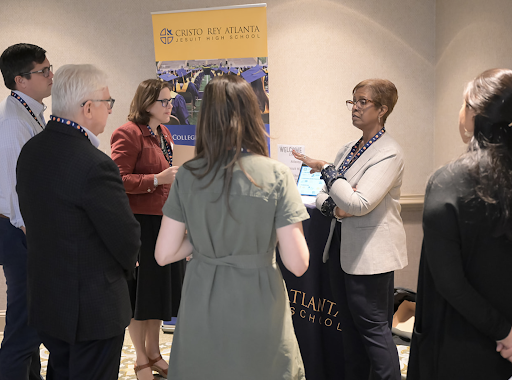
One hundred partners, staff, board members and supporters gathered together for 50CAN’s annual CAN Summit, held in the Peach State to celebrate the 10th anniversary of GeorgiaCAN. The entire Summit was built around interactive, small group discussions driven forward by over 40 national and local presenters to put the spotlight on the ideas and innovations that can inspire the future of education.


